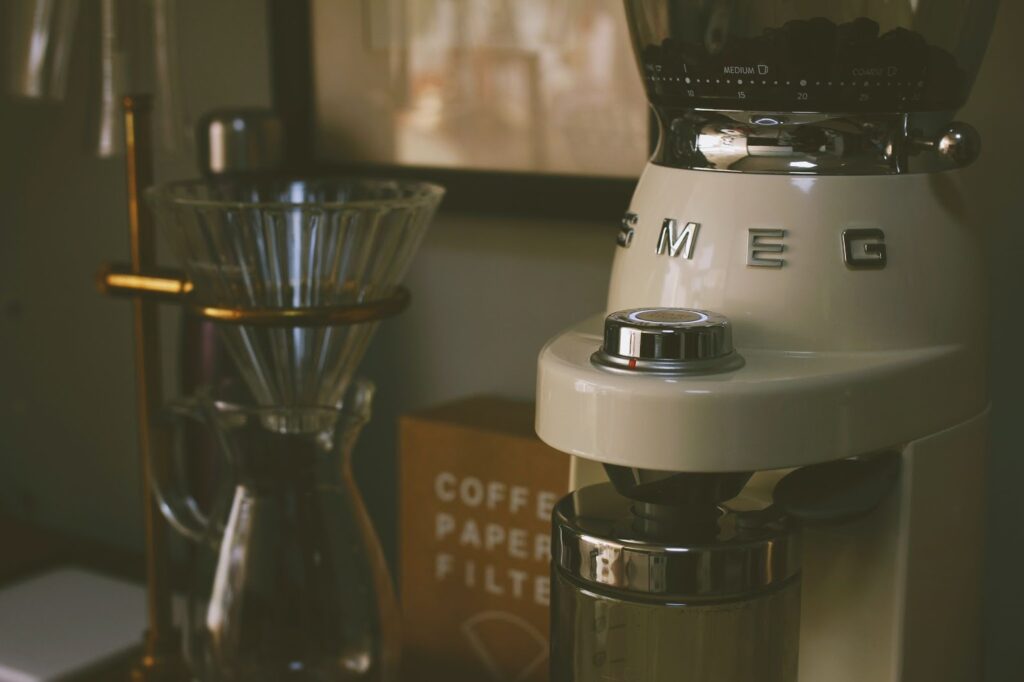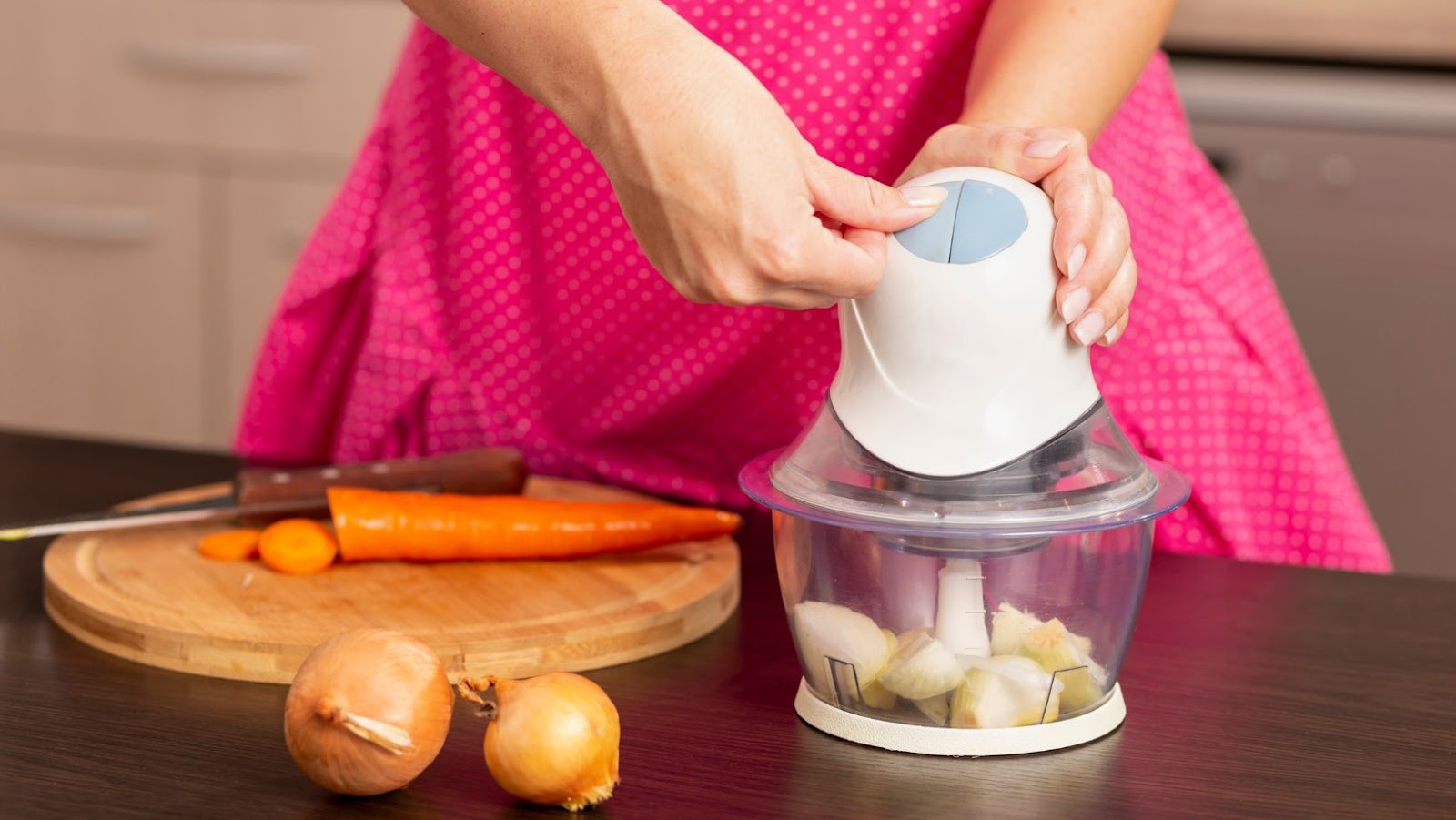
Key Differences Between Food Choppers And Food Processors
Food Choppers vs Food Processors: Key Differences
Food choppers and food processors are two essential tools used in the kitchen, but they have distinctive differences. A food chopper is a manual kitchen gadget that helps to cut vegetables, fruits, and nuts into smaller pieces. It is operated by pressing down on the handle, which activates the blades. On the other hand, a food processor is an electric kitchen appliance that can chop, slice, shred, grind and puree various ingredients.
The following table highlights more differences between food choppers and food processors:
| Criteria | Food Chopper | Food Processor |
| Power source | Manual | Electric |
| Capacity | Small | Large |
| Type of blade | Fixed blades or rotary discs | Multiple interchangeable blades |
| Functionality range | Limited to chopping only | Can perform numerous functions such as slicing, shredding, grinding and pureeing |
It’s interesting to note that while both appliances operate by using blades to chop ingredients, their functionality correlates with their power source. Food processors offer a more extensive range of prep possibilities compared to a food chopper’s limited chopping functionality. In fact, according to ConsumerReports.org – “Food processor motor wattage ranges from just under 400 watts to over 1,200 watts; anywhere from about .5 (or even smaller) to up to 12 cups is available.”
Understanding these unique differences helps one make an informed choice when deciding what tool/appliance is better for specific cooking needs. Choppers are like the knives of the kitchen, while processors are like the brains.
Food Chopper vs Food Processor
To understand the differences between food choppers and food processors, turn your attention to the key factors that set them apart. Solve your queries about size and capacity differences, blade types and functions, food processing abilities, blade sharpness and durability by exploring the following sub-sections.
Size and Capacity Differences
Food Processing Capacity Variations
The difference in food choppers and processors can be determined by the size and processing capacity of these appliances. The former is more compact, while the latter has a larger build. You can utilize this data to select an appliance suitable for handling your food needs.
| Features | Food Choppers | Food Processors |
| Size | Compact Design | Bigger Build Than Chopper |
| Capacity Size (Bowl) | Up to 4 -5 cups limit, smaller chopper may have even lesser product capacity given its size | 6-16 cups Limit , also varies on model type |
Disk Attachment – Various disk blades used for shredding and slicing of food items.
It’s important to distinguish that although both appliances are used for comparable purposes, you must choose which based on cooking volume. A chopper with a smaller bowl is appropriate if you only have small quantities to process, whereas a processor would be better suited for bigger events.
Pro Tip: Before making your final selection, factor in additional facets such as efficiency levels and supplementary features.
Choosing the right blade type is important, because nobody wants a salsa that looks like it went through a paper shredder.
Blade Types and Functions
Blade Types and Their Functionality
Food choppers and food processors differ in their blade types and how they function. The blade types vary according to the task at hand, and each has a distinct purpose for which it is designed.
Here’s a table outlining the various blades you’ll find in both devices and what each one does:
| Blade Type | Food Chopper Function | Food Processor Function |
| S-Blade | Chops nuts and purees soft foods into coarse pieces | Purees fruits, vegetables, and cheese or chops coarse vegetables like onions |
| French Cut Disc | Cuts veggies finely, creating even slices or juliennes | Shreds cheese or firm produce such as carrots, cucumbers etc. into fine pieces |
| Dough Blade | Mixes dough without forming gluten chains | Kneads bread doughs to activate gluten and create elasticity |
| Grater Attachment | Grates cheese or veggies coarsely | Shreds delicate ingredients such as ginger garlic or nutmeg into finer pieces |
Apart from the above blades, some food processors also come with specialized discs for slicing different thickness levels of fruits and vegetables.
It’s worth noting that while both appliances utilize sharp spinning blades to chop up food items, there are significant variations in design that affect performance. For instance, most choppers have relatively wider bowls compared to food processors, allowing easier movements of ingredients during the chopping process.
Why settle for just chopping when you can have the whole processing enchilada?
Food Processing Abilities
Innovative technologies have budged the cooking process in recent times. Ascertaining the variance between the food processing abilities of food choppers and food processors is significant if you want to pick the one that meets your kitchen needs.
Below is a comprehensive table depicting the unique qualities of both food choppers and food processors:
| Food Chopper | Food Processor | |
| Capacity | 1-4 cups | 3-20 cups |
| Functionality | Chops, grinds, minces | Purees, mixes, slices, shreds |
| Maintenance | Easy to clean but requires more manual effort | Dishwasher safe but may contain attachments that need to be cleaned individually |
It’s notable that although a food processor and a chopper seem rather interchangeable at face value, they serve different purposes. A food processor can be an all-in-one appliance for versatile meal preparation while a chopper operates exceptionally well with smaller quantities.
I recall receiving my first food processor as a gift from my Aunt Edna back in the late ’80s as I was preparing Thanksgiving dinner for the family. It made all those daunting prep tasks bearable! From slicing vegetables for the stuffing to whisking up smooth buttery mashed potatoes – it still reigns supreme in my kitchen to this day.
A dull blade is like a bad date – it just won’t cut it.
Blade Sharpness and Durability
Maintaining the sharpness and durability of blades is crucial to food choppers and processors. The efficiency and effectiveness of cutting, chopping, mixing, and grinding ingredients depend on the quality of their blades.
| Food Chopper | Food Processor | |
| Blade Sharpness | Cutting/Mincing blade | Multifunctional blades for various tasks – Slicing, Shredding, Kneading etc. |
| Blade Durability | Durable Stainless Steel or Hardened Plastic Blades that can handle small to medium quantities. Not suitable for heavy-duty tasks. | Variety of Twin-Paddle Blades made from High-Grade Steel which are suitable for large quantities and heavy-duty processing jobs. |
Another important factor is the availability of replacements or spare parts for a specific model that can extend its lifespan and save time and money. One aspect that cannot be overlooked is safety when handling sharp blades; it is recommended to follow manufacturers’ instructions properly. While looking for options in the market, a friend shared how her culinary career turned around after investing in a high-quality food processor with long-lasting blades that saved her time while creating mouth-watering delights. Food processors are for the fancy chefs, while food choppers are for the lazy ones – choose wisely.
Choosing Between a Food Chopper and a Food Processor
To make an informed choice about whether to use a food chopper or a food processor, you need to take into account some key considerations. Here are the factors you should consider when choosing between a food chopper and a food processor: Considerations for Choosing a Food Chopper, Considerations for Choosing a Food Processor, and Cost Analysis and Budget Considerations.
Considerations for Choosing a Food Chopper
When deciding on a kitchen tool for chopping food, there are important factors to consider. These include the size and power of the machine, the type of blades it uses, its versatility, and its ease of use and cleaning.
Considerations for Choosing a Food Chopper:
| Factors | Description |
| Size | Choose a machine that can accommodate the amount of food you typically chop. |
| Power | Look for machines with high wattage motors if you plan to chop harder foods like nuts or meats. |
| Blades | Consider interchangeable blades that allow for different types of chopping or shredding. |
| Versatility | Determine if the machine can also handle other tasks such as pureeing or grinding spices. |
| Ease of Use and Cleaning | Select a machine that is user-friendly and easy to clean without tedious disassembling. |
It’s also important to note that while food choppers can be less expensive than food processors, they may not have all the same capabilities.
A true fact: According to Consumer Reports, in a comparison test of food processors and choppers found that choppers are best used for small jobs, while processors offer more versatility for larger recipes. Choosing a food processor is like choosing a life partner – make sure it can handle all your needs and doesn’t leave you feeling chopped up.
Considerations for Choosing a Food Processor
When choosing a food processor, there are various factors to consider. It is important to think about the type of food you will be processing, how often you will use it and how much space you have in your kitchen. Here are some considerations for picking the right food processor:
| Consideration | Description |
| Capacity | Choose a size that works for your household needs. |
| Motor power | A more powerful motor can handle tougher ingredients. |
| Attachments/Accessories | Different attachments can make your food processor more versatile- blades, shredders, and slicers etc. |
| Budget | Food processors range from affordable to expensive. Establish a budget based on your requirements. |

If you plan on grinding meat or making nut butter frequently, look for a model with higher motor power. Also, consider if the food processor comes with additional attachments such as a dough blade. This allows for versatility in its usage for all types and manner of cooking adventures.
It is also important to think about any unique features you may need. Does it have settings like pulse control? Choose features based on the tasks and functionality in aiding everyday cooking procedures at home.
So don’t miss out,on valuable time-saving Kitchen preparatory technology meant to aid in everyday life by spending too much time lamenting which best fits your bill; Assess which model prioritises neatness,simplicity,classy editing standards whilst addressing seasonalistic needs of the kitchen. Choose and purchase your next kitchen aid today — no more wondering. “Is my chopping game, that of a professional?”. The food processor’s got you covered!
When it comes to cost analysis and budget considerations, remember: a food chopper might be cheaper, but a food processor can be used for more than just salsa.
Cost Analysis and Budget Considerations
To make an economical decision when choosing between a food chopper and a food processor, it is important to consider cost analysis and budget considerations.
For convenience, a table can be created to compare the costs of common models of both appliances. In the “Cost Analysis and Budget Considerations” table, the columns can include the brand, model, price range, features (such as size and capacity), and warranties.
One unique consideration is to evaluate which appliance best suits one’s needs. For example, if a person frequently cooks for a family or hosts gatherings, investing in a more expensive but powerful food processor might be more cost-effective in the long run.
A colleague shared how they initially purchased a cheaper food chopper but ended up having to replace it numerous times due to its limitations. They eventually decided to invest in a high-quality food processor that lasted for years and made their kitchen tasks much more efficient.






